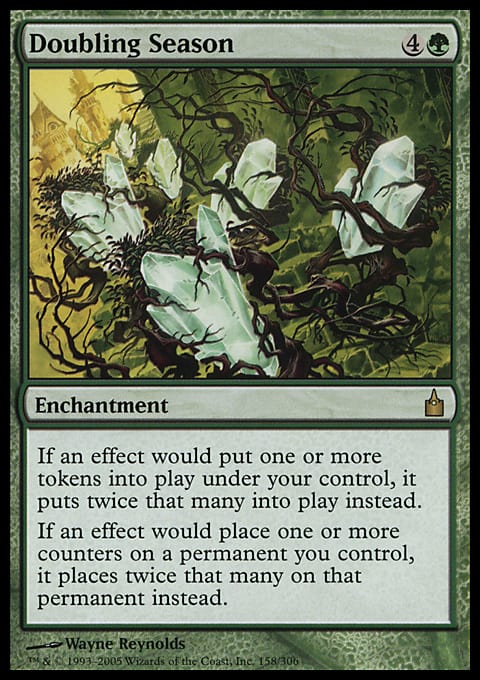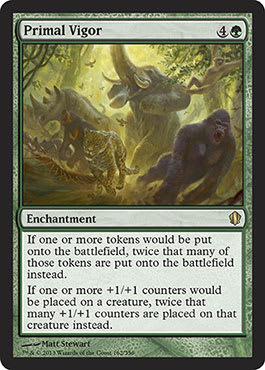It seems a number of cards have spiked over the past few months, and as has been the trend, fewer go down than those that hold their ground. Most of this lately has been from Modern speculation and demand. Most people do not separate these topics as often as they should, but the reality of it is both reasons can drive a cards price up. Identifying where the divide is on any particular card will usually indicate a reasonable price where it will settle. As the market evolves more and more, people are heading in on the speculation game, but much like the way floor trading fell aside, speculation will follow.
People are so concerned about price spikes that they many times dive in no matter what the new price is. This is most unfortunate for those who are actually looking to play the card, and for that reason, I have held back from mass buyouts based on speculation. Now, this does not mean I have stopped buying cards looking for long-term value; it just means I am no longer watching the Pro Tour with dozens or hundreds of items in my cart. Why, you ask? Partially because I have felt the other side of that market, and having to deal with the hassle of canceled orders when a card doesn’t spike is a major pain. Beyond that, I also see how many people are losing out even when a card does go up. Between fees and the inevitable price drops before people obtain the cards, it can be hard to make much even if a card does double initially.
So, where does that leave me when I am looking to make some bonus cash beyond just the average buys locally and at events? I have taken an approach that I used to use a number of years ago and began targeting cards that will have long-term value even with the occasional reprint. Before I go any further, let me explain what I mean. Back when I first started treating Magic as a profession, I was targeting cards such as Wilt-Leaf Liege and Doubling Season because even if the Standard format was unstable, I could still see profit long-term. It also helped that, back then, most people did not expect these to be worth much, so they were much easier to acquire—but that does not change my approach.
A perfect example of a card I have put my eye back on lately is Parallel Lives. These can be found currently for a very reasonable $2, and to me, that feels like a no-brainer. This card has already seen a price higher than that while it was in Standard, and as of late, we have seen a number of the competitive cards, such as Snapcaster Mage and Geist of Saint Traft go back up; the casual cards may take a little longer, but they will creep. Doubling Season has already made a solid recovery from the Modern Master and judge promo printings, and that leads me to believe this effect is still in demand and will probably creep up $1 or so each year until the market realizes there are suddenly only a few copies on the market and that they will double overnight.
Learning to move markets is very important in Magic finance, as you have to be a step ahead of the crowd and, if possible, play off what the others are doing wrong to profit down the road. In this case, we have seen a trend that tells us any time a card suddenly dries up online that the horde will finish off the buyout, and rather than being one of those people salty that your order was not fulfilled, it is best to be the person waiting to restock that day and move them at the higher number before the others have delivered and the market autocorrects. Even if you miss that window, already having them means you will not need to worry about canceled orders or missing out on your play set, allowing you to both profit and keep what you want to still have and play with.
So, this may seem like a simple concept, but what cards should we target? The real answer behind this just comes with watching what is traditionally popular and has held a stagnant price for a while. You can also use this strategy to acquire underpriced cards at release, though that still conflicts with orders being canceled and the hassle of buyouts if you are not the only one onboard to begin with. Herald of Torment was a perfect example, as it was certainly underpriced, but so many people concentrated on the mythics and high-end rares that it did not spike until my initial copies had shipped. Knowing how to identify these cards just comes with time, but you will see patterns when you compare to already existing cards.
A great example of a card I know will see a substantial increase in the long term due to previous knowledge is Primal Vigor. An unlikely reprint in the short term, this card can still be found in the decks on shelves, which, however, will not last. Over the next few months, copies will become scarcer, and then the new price will set initially based on the singles within. After this point, a card can then freely gain as much value as there is demand. I believe barring reprint that Primal Vigor could be $10 to $20 within the next two years, and even with a reprint, I can see that number easily achieved down the road. Watching for certain effects or creature types or keywords is very important when evaluating long-term cards. There are far too many to list in this article, but honestly, if a card seems to have a home somewhere, there is almost a guarantee that someone is in fact playing it that way.
With the upcoming movie and action-figure line, I believe Magic as a whole will be receiving a facelift, and that certainly holds true for the financial end. The competitive crowd is not the target for these marketing campaigns, and I am okay with that because the people who play casually and demand cards like Parallel Live and Primal Vigor are a much more consistent customer base for me already, and if Wizards of the Coast’s attempts prove successful, I don’t expect business to become any worse.
We have seen multiple turning points in this market if we look back; currently, we are in the middle of the “modern age,” which has shown the realization that older cards are just hard to find. That, coupled with the astronomical demand increase, has driven prices through the roof, even on the most innocuous of cards. Before that, we had the Commander spike—and Legacy before that. History has seen a number of market spikes and relatively no market dropouts comparatively, meaning the real way to master this market is to stay ahead of it, as holds true with almost every market. Consistent buys and picking up collections will carry you through well enough, but if you are looking for any sustainable growth, you have to understand how this game cycles, and as we are in a very competitive-heavy cycle now, that will eventually dwindle as demand is met and the casual prices will then begin to rise. As with counterfeits, reprints, and many other occurrences, this is nothing that has not happened before.
The real key is to understand that it is okay to miss some opportunities, and racing against a crowd of thousands to hit that checkout button only to have your order canceled is not worth it. Many stores are putting policies in place to minimize buyouts anyway, and that is their right, which does not mean Magic finance is dead. Many will fall off as the “easy money” declines, but those who evolve along with the market will find new avenues to profit and continue to not only fund their hobby, but also hold a collection that grows over time.
So, I leave you with some homework this week: Go find a card you believe is under the radar. It doesn’t have to be a Modern all-star or a Legacy staple. Pick a keyword or an ability you believe will stand the test of time—really anything you can find that seems as though it would be fun to play. You may even branch out and create an entire deck in your head, and that is fine. Now, I encourage you to watch those cards over the next few months to a year. What, if anything, changed the price? If you do this with enough cards, you will find patterns, keywords, or abilities that spike together. Also note how old the cards you are watching are. There are a number of different factors that go into when a card will increase, and most of that stems from demand and age. As a card grows older, the demand threshold to drive the price up goes down, meaning it is much more likely a fringe card from The Dark will spike over something from Innistrad. We have already seen examples of this in these older sets as cards like City of Shadows steadily creep up just due to age.
That is all I have for this week. Excuse the soapbox rant, but as much as I try to stay ahead of the market, I also believe it is important to allow the players that courtesy as well. Over time, if Magic continues down this path, prices will continue to see an upward trend higher than that of most markets in the long term. Though that market shifts, the primary thing to understand is that it all comes back around—even a reprint cannot kill the price if the demand is there, so ensure anything you are looking to pick up has real demand rather than just speculation.
Ryan Bushard



























